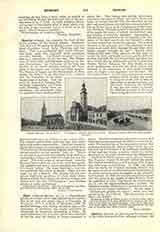

Eparchy (eparchia) was originally the name of one of the divisions of the Roman Empire. Diocletian (284-305) and Maximian divided the empire into four great Prefectures (Gaul, Italy, Illyricum, and the East). Each was subdivided into (civil) Dioceses, and these again into Eparchies under governors (proesides, hegemones). The Church accepted this division as a convenient one for her use. The Prefectures of Gaul, Italy, and Illyricum made up the Roman Patriarchate; the Prefecture of the East was divided (in the fourth century) between the Patriarchs of Alexandria and Antioch and three exarchs. The Diocese of Egypt was the Patriarchate of Alexandria, the Diocese of the East (not to be confused with the Prefecture of the East) became that of Antioch. Asia was under the Exarch of Ephesus, Pontus under Cappadocia, and Thrace under Heraclea. Under these patriarchates and exarchates came the eparchies under metropolitans; they had under them the bishops of the various cities. The original ecclesiastical eparchies then were provinces, each under a metropolitan. The First Council of Nicaea (325) accepts this arrangement and orders that: “the authority [of appointing bishops] shall belong to the metropolitan in each eparchy” (can. iv). That is to say that in each such civil eparchy there shall be a metropolitan bishop who shall have authority over the others. This is the origin of our provinces. Later in Eastern Christendom the use of the word was gradually modified and now it means generally the diocese of a simple bishop. The name Eparchy is, however, not commonly used except in Russia. There it is the usual one for a diocese. The Russian Church now counts eighty-six eparchies, of which three (Kiev, Moscow, and St. Petersburg) are ruled by bishops who always bear the title “Metropolitan“, and fourteen others are under archbishops.
ADRIAN FORTESCUE

